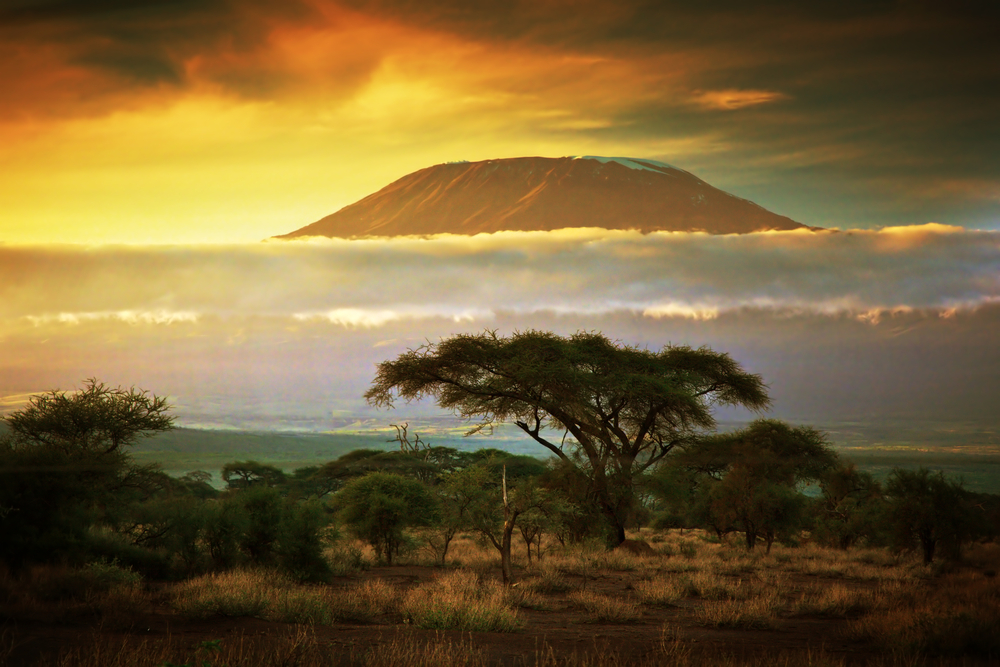
First rule: There are no rules. These resources are completely free and at your disposal. Use as much, or as little, as you want. Study casually, or work to create a portfolio of academic work that will blow the socks off of the educational establishment.
Feel free to adapt the materials for your own purposes. We expect families, business people, backpackers, college students, high school kids, middle aged vacationers, and retirees who are on a late life adventure to take these materials and run with them. We’d be very happy for teachers or travel group leaders to add these materials to their study abroad packets as well.
The nature of open source is collaboration, so please feel free to contribute when you become aware of resources we haven’t listed, or you have project ideas that we haven’t developed. Send us your work and inspire others to reach higher and deeper as they travel!
Our goal with this project is to inspire adventure and further education through experiential learning around the world. Please send us a note and let us know how you used these resources!

Buffet Style Learning
Does the menu look overwhelming? Looking for a formula to use as a skeleton for your studies in Kenya?
Choose:
- Two books
- Two films
- Three articles
- One Problem & Solution or Project Option
- One Cultural Assignment
Table of Contents
- Books
- Books for Kids
- Films
- Articles
- Project Options
- Problems & Solutions
- Cultural Assignments
- Create Your Own Coursework
Book Recommendations

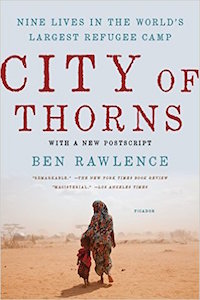 City of Thorns: Nine Lives in the World’s Largest Refugee Camp
City of Thorns: Nine Lives in the World’s Largest Refugee Camp
by Ben Rawlence
The Dadaab refugee camp is many things: to the charity workers, it’s a humanitarian crisis; to the Kenyan government, a “nursery for terrorists”; to the Western media, a dangerous no-go area. But to its half a million residents, it’s their last resort.
Situated hundreds of miles from any other settlement, deep within the inhospitable desert of northern Kenya where only thorn bushes grow, Dadaab is a city like no other. Its buildings are made from mud, sticks, or plastic. Its entire economy is grey. And its citizens survive on rations and luck. Over the course of four years, Ben Rawlence became a firsthand witness to a strange and desperate place, getting to know many of those who had come seeking sanctuary. Among them are Guled, a former child soldier who lives for football; Nisho, who scrapes an existence by pushing a wheelbarrow and dreaming of riches; Tawane, the indomitable youth leader; and Kheyro, a student whose future hangs upon her education.
In City of Thorns, Rawlence interweaves the stories of nine individuals to show what life is like in the camp, sketching the wider political forces that keep the refugees trapped. Lucid, vivid, and illuminating, City of Thorns is an urgent human story with deep international repercussions, brought to life through the people who call Dabaab home.
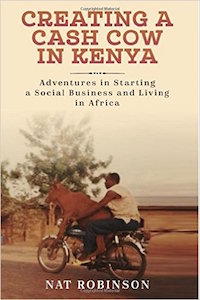 Creating a Cash Cow in Kenya: Adventures in Starting a Social Business and Living in Africa
Creating a Cash Cow in Kenya: Adventures in Starting a Social Business and Living in Africa
by Nat Robinson
What started as an eight-month assignment turned into a six-year adventure and the creation of a social business to help Kenya’s farmers lift themselves out of poverty. The social business, Juhudi Kilimo, provides microloans to enable smallholder farmers to buy productive assets, such as cows, tools and so on. Since its foundation in 2009, Juhudi Kilimo has provided over 50,000 loans worth $30 million and financed the purchase of 23,100 cows by some of Kenya’s poorest farmers.
In its six years Juhudi managed to rack up an impressive list of international investors — The Rockefeller Foundation, The Ford Foundation, Acumen Fund, Soros Economic Development Fund, Grameen Foundation, Deutsche Bank and Kiva.org. The company also won a Charles Schwab Social Entrepreneur of the Year Award and part of CIO Magazine’s top 100 list. The challenges faced by the company in its early years reveal a dark underbelly of investor greed, corruption and the deep multicultural misunderstandings that can lead to conflicts.
The company was driven by a young entrepreneur from the US, who admits he had no idea what he was doing but learned along the way. The lessons he presents here can help guide those starting new ventures or trying to defy the odds with a new social business in East Africa. The business stories are intertwined with his adventures, racing camels, running from rhinos and much more.
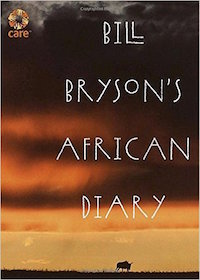 Bill Bryson’s African Diary
Bill Bryson’s African Diary
by Bill Bryson
Bryson visits Kenya at the invitation of CARE International, the charity dedicated to eradicating poverty. Kenya is a land of contrasts, with famous game reserves and a vibrant culture. It also provides plenty to worry a traveller like Bill Bryson, fixated as he is on the dangers posed by snakes, insects and large predators. It is also a country with many serious problems: refugees, AIDS, drought, and grinding poverty. The resultant diary, though short in length, contains the trademark Bryson stamp of wry observation and curious insight.
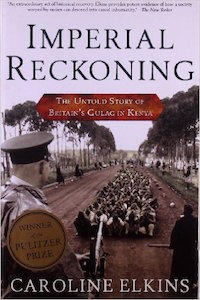 Imperial Reckoning: The Untold Story of Britain’s Gulag in Kenya
Imperial Reckoning: The Untold Story of Britain’s Gulag in Kenya
by Caroline Elkins
A major work of history that for the first time reveals the violence and terror at the heart of Britain’s civilizing mission in Kenya
As part of the Allied forces, thousands of Kenyans fought alongside the British in World War II. But just a few years after the defeat of Hitler, the British colonial government detained nearly the entire population of Kenya’s largest ethnic minority, the Kikuyu-some one and a half million people.
The compelling story of the system of prisons and work camps where thousands met their deaths has remained largely untold-the victim of a determined effort by the British to destroy all official records of their attempts to stop the Mau Mau uprising, the Kikuyu people’s ultimately successful bid for Kenyan independence.
Caroline Elkins, an assistant professor of history at Harvard University, spent a decade in London, Nairobi, and the Kenyan countryside interviewing hundreds of Kikuyu men and women who survived the British camps, as well as the British and African loyalists who detained them.
The result is an unforgettable account of the unraveling of the British colonial empire in Kenya-a pivotal moment in twentieth- century history with chilling parallels to America’s own imperial project.
Imperial Reckoning is the winner of the 2006 Pulitzer Prize for Nonfiction.
 Histories of the Hanged: The Dirty War in Kenya and the End of Empire
Histories of the Hanged: The Dirty War in Kenya and the End of Empire
by David Anderson
“A remarkable account of Britain’s last stand in Kenya. This is imperial history at its very best.”–John Hope Franklin
In “a gripping narrative that is all but impossible to put down” (Joseph C. Miller), Histories of the Hanged exposes the long-hidden colonial crimes of the British in Kenya. This groundbreaking work tells how the brutal war between the colonial government and the insurrectionist Mau Mau between 1952 and 1960 dominated the final bloody decade of imperialism in East Africa.
Using extraordinary new evidence, David Anderson puts the colonial government on trial with eyewitness testimony from over 800 court cases and previously unseen archives. His research exonerates the Kikuyu rebels; hardly the terrorists they were thought to be; and reveals the British to be brutal aggressors in a “dirty war” that involved leaders at the highest ranks of the British government. This astonishing piece of scholarship portrays a teetering colonial empire in its final phase; employing whatever military and propaganda methods it could to preserve an order that could no longer hold.
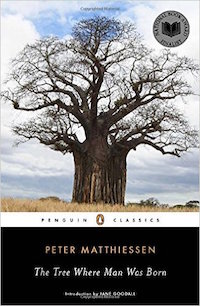 The Tree Where Man Was Born
The Tree Where Man Was Born
by Peter Matthiessen & Jane Goodall
A finalist for the National Book Award when it was released in 1972, this vivid portrait of East Africa remains as fresh and revelatory now as on the day it was first published. Peter Matthiessen exquisitely combines nature and travel writing to portray the sights, scenes, and people he observed firsthand in several trips over the course of a dozen years.
From the daily lives of wild herdsmen and the drama of predator kills to the field biologists investigating wild creatures and the anthropologists seeking humanity’s origins in the rift valley, The Tree Where Man Was Born is a classic of journalistic observation. This Penguin Classics edition features an introduction by groundbreaking British primatologist Jane Goodall.
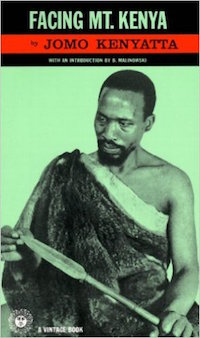 Facing Mount Kenya
Facing Mount Kenya
by Jomo Kenyatta
With an Introduction by Bronislav Malinkowski, Facing Mount Kenya is a central document of the highest distinction in anthropological literature, an invaluable key to the structure of African society and the nature of the African mind.
Facing Mount Kenya is not only a formal study of life and death, work and play, sex and the family in one of the greatest tribes of contemporary Africa, but a work of considerable literary merit. The very sight and sound of Kikuyu tribal life presented here are at once comprehensive and intimate, and as precise as they are compassionate.
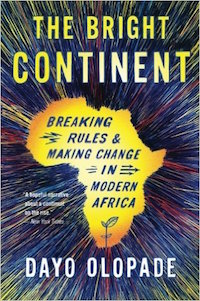 The Bright Continent: Breaking Rules and Making Change in Modern Africa
The Bright Continent: Breaking Rules and Making Change in Modern Africa
by Dayo Olopade
“A hopeful narrative about a continent on the rise.” —New York Times Book Review
“For anyone who wants to understand how the African economy really works, The Bright Continent is a good place to start.” —Reuters
Dayo Olopade knew from personal experience that Western news reports on conflict, disease, and poverty obscure the true story of modern Africa. And so she crossed sub-Saharan Africa to document how ordinary people deal with their daily challenges. She found what cable news ignores: a continent of ambitious reformers and young social entrepreneurs, driven by kanju—creativity born of African difficulty.
It’s a trait found in pioneers like Kenneth Nnebue, who turned cheap VHS tapes into the multimillion-dollar film industry Nollywood. Or Ushahidi, a technology collective that crowdsources citizen activism and disaster relief. A shining counterpoint to the conventional wisdom, The Bright Continent rewrites Africa’s challenges as opportunities to innovate, and celebrates a history of doing more with less as a powerful model for the rest of the world.
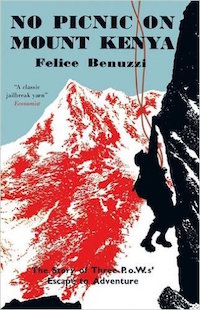 No Picnic on Mount Kenya
No Picnic on Mount Kenya
by Felice Benuzzi
A rediscovered mountaineering classic and the extraordinary true story of a daring escape up Mount Kenya by three prisoners of war. When the clouds covering Mount Kenya part one morning to reveal its towering peaks for the first time, prisoner of war Felice Benuzzi is transfixed. The tedium of camp life is broken by the beginnings of a sudden idea – an outrageous, dangerous, brilliant idea. There are not many people who would break out of a P.O.W. camp, trek for days across perilous terrain before climbing the north face of Mount Kenya with improvised equipment, meager rations, and with a picture of the mountain on a tin of beef among their more accurate guides.
There are probably fewer still who would break back in to the camp on their return. But this is the remarkable story of three such men. No Picnic on Mount Kenya is a powerful testament to the human spirit of revolt and adventure in even the darkest of places. “The history of mountaineering can hardly present a parallel to this mad but thrilling escapade” – Saturday Review “A most extraordinary prisoner-of-war and escape story” – New Yorker
“A mad venture and a gallant tribute to man’s deep yearning for freedom” – Kirkus Reviews
“The book crackles with the same dry humour as its title. It contains the prison-yard bartering and candlelight stitching that mark a classic jailbreak yarn; the encounters with wild beasts in Mount Kenya’s forest belt are as gripping, and the descriptions of sparkling glaciers as awe-inspiring, as any passage in the great exploration diaries of the early 20th century” – The Economist
 Happy Valley
Happy Valley
by Nicholas Best
The definitive story of the British in Kenya, from the explorer Joseph Thomson, whose exploits inspired King Solomon’s Mines, to the decadent Happy Valley set of the 1930s, the murder of Lord Erroll, and the Mau Mau revolt of the 1950s. “Nicholas Best tells an immensely entertaining tale” – Max Hastings, Evening Standard “Erudite, amusing and, even, gossipy” – Nigel Dempster, Punch “First class… quite hilariously funny!'” – Melbourne Herald “Anyone with experience of Kenya, past or present, resident or tourist, will enjoy reading Happy Valley” – Country Life
 Circling the Sun: A Novel
Circling the Sun: A Novel
by Paula McLain
Paula McLain, author of the phenomenal bestseller The Paris Wife, now returns with her keenly anticipated new novel, transporting readers to colonial Kenya in the 1920s. Circling the Sun brings to life a fearless and captivating woman—Beryl Markham, a record-setting aviator caught up in a passionate love triangle with safari hunter Denys Finch Hatton and Karen Blixen, who as Isak Dinesen wrote the classic memoir Out of Africa.
Brought to Kenya from England as a child and then abandoned by her mother, Beryl is raised by both her father and the native Kipsigis tribe who share his estate. Her unconventional upbringing transforms Beryl into a bold young woman with a fierce love of all things wild and an inherent understanding of nature’s delicate balance. But even the wild child must grow up, and when everything Beryl knows and trusts dissolves, she is catapulted into a string of disastrous relationships.
Beryl forges her own path as a horse trainer, and her uncommon style attracts the eye of the Happy Valley set, a decadent, bohemian community of European expats who also live and love by their own set of rules. But it’s the ruggedly charismatic Denys Finch Hatton who ultimately helps Beryl navigate the uncharted territory of her own heart. The intensity of their love reveals Beryl’s truest self and her fate: to fly.
Set against the majestic landscape of early-twentieth-century Africa, McLain’s powerful tale reveals the extraordinary adventures of a woman before her time, the exhilaration of freedom and its cost, and the tenacity of the human spirit.
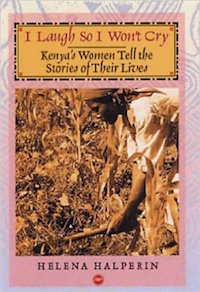 I Laugh So I Won’t Cry: Kenya’s Women Tell The Story Of Their Lives
I Laugh So I Won’t Cry: Kenya’s Women Tell The Story Of Their Lives
by Helena Halperin
In I Laugh So I Won’t Cry, Kenya’s women tell their stories of love, struggle, happiness, and tragedy in their own words. I Laugh strikes a balance between intimate acquaintance and a comprehensive view. In-depth portraits allow readers to know a diverse selection of women intimately. Topical chapters feature the voices of a large range of women talking about the subjects closest to their hearts.
Chapters cover: marriage, child rearing, work and getting by when there is no work, women’s self-help groups, genital cutting, ethnic tensions, and the new government that has promised huge reforms. I Laugh shows the full panorama of women’s struggles in sub-Saharan Africa without sacrificing the vivid details of individual lives. Subsistence farmers, herders, beggars, sex workers, office workers, hawkers, business executives and a few friends who stopped an ethnic war all speak in I Laugh So I Won’t Cry.
 Running with the Kenyans: Discovering the Secrets of the Fastest People on Earth
Running with the Kenyans: Discovering the Secrets of the Fastest People on Earth
by Adharanand Finn
Whether running is your recreation or your religion, Adharanand Finn’s incredible journey to the elite training camps of Kenya will captivate and inspire you, as he ventures to uncover the secrets of the fastest people on earth. Finn’s mesmerizing quest combines a fresh look at barefoot running, practical advice on the sport, and the fulfillment of a lifelong dream: to run with his heroes.
Uprooting his family of five, Finn traveled to a small, chaotic town in the Rift Valley province of Kenya—a mecca for long-distance runners, thanks to its high altitude, endless paths, and some of the top training schools in the world. There Finn would run side by side with Olympic champions, young hopefuls, and barefoot schoolchildren, and meet a cast of unforgettable characters. Amid the daily challenges of training and of raising a family abroad, Finn would learn invaluable lessons about running—and about life.
 Love, Life, and Elephants: An African Love Story
Love, Life, and Elephants: An African Love Story
by Daphne Sheldrick
The first person to successfully raise newborn elephants, Dame Daphne Sheldrick has saved countless African animals from certain death. In this indelible and deeply heartfelt memoir, Daphne tells of her remarkable career as a conservationist and introduces us to a whole host of orphans?including Bushy, a liquid-eyed antelope, and the majestic elephant Eleanor.
Yet she also shares the incredible human story of her relationship with David Sheldrick, the famous Tsavo National Park warden whose death inspired the David Sheldrick Wildlife Trust and the orphans’ nursery, where Daphne works to this day. From her tireless campaign to preserve Kenya’s wildlife to the astonishing creatures she befriended along the way, Love, Life, and Elephants is alive with compassion and humor, providing rare insight into the life of one of the world’s most fascinating women.
 The Bolter: The Story of Idina Sackville, Who Ran Away to Become the Chief Seductress of Kenya’s Scandalous “Happy Valley Set”
The Bolter: The Story of Idina Sackville, Who Ran Away to Become the Chief Seductress of Kenya’s Scandalous “Happy Valley Set”
by Frances Osborne
In an age of bolters—women who broke the rules and fled their marriages—Idina Sackville was the most celebrated of them all. Her relentless affairs, wild sex parties, and brazen flaunting of convention shocked high society and inspired countless writers and artists, from Nancy Mitford to Greta Garbo. But Idina’s compelling charm masked the pain of betrayal and heartbreak.
Now Frances Osborne explores the life of Idina, her enigmatic great-grandmother, using letters, diaries, and family legend, following her from Edwardian London to the hills of Kenya, where she reigned over the scandalous antics of the “Happy Valley Set.” Dazzlingly chic yet warmly intimate, The Bolter is a fascinating look at a woman whose energy still burns bright almost a century later.
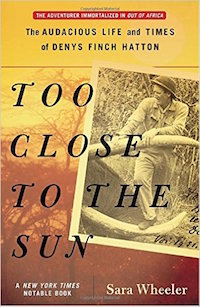 Too Close to the Sun: The Audacious Life and Times of Denys Finch Hatton
Too Close to the Sun: The Audacious Life and Times of Denys Finch Hatton
by Sara Wheeler
A champion of Africa, legendary for his good looks, his charm, and his prowess as a soldier, lover, and hunter, Denys Finch Hatton inspired Karen Blixen to write the unforgettable Out of Africa. Now esteemed British biographer Sara Wheeler tells the truth about this extraordinarily charismatic adventurer.
Born to an old aristocratic family that had gambled away most of its fortune, Finch Hatton grew up in a world of effortless elegance and boundless power. In 1910, searching for something new, he arrived in British East Africa and fell in love–with a continent, with a landscape, with a way of life that was about to change forever. In Nairobi, Finch Hatton met Karen Blixen and embarked on one of the great love affairs of the twentieth century. Intellectual equals, Finch Hatton and Blixen were genuine pioneers in a land that was quickly being transformed by violence, greed, and bigotry. Ever restless, Finch Hatton wandered into a career as a big-game hunter and became an expert bush pilot. Mesmerized all his life by the allure of freedom and danger, Finch Hatton was, writes Wheeler, “the open road made flesh.”
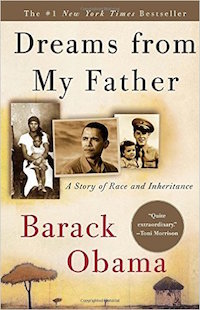 Dreams from My Father: A Story of Race and Inheritance
Dreams from My Father: A Story of Race and Inheritance
by Barack Obama
In this lyrical, unsentimental, and compelling memoir, the son of a black African father and a white American mother searches for a workable meaning to his life as a black American. It begins in New York, where Barack Obama learns that his father—a figure he knows more as a myth than as a man—has been killed in a car accident. This sudden death inspires an emotional odyssey—first to a small town in Kansas, from which he retraces the migration of his mother’s family to Hawaii, and then to Kenya, where he meets the African side of his family, confronts the bitter truth of his father’s life, and at last reconciles his divided inheritance.
Pictured in lefthand photograph on cover: Habiba Akumu Hussein and Barack Obama, Sr. (President Obama’s paternal grandmother and his father as a young boy). Pictured in righthand photograph on cover: Stanley Dunham and Ann Dunham (President Obama’s maternal grandfather and his mother as a young girl).
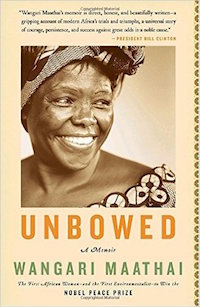 Unbowed: A Memoir
Unbowed: A Memoir
by Wangari Maathai
In Unbowed, Nobel Prize winner Wangari Maathai recounts her extraordinary journey from her childhood in rural Kenya to the world stage. When Maathai founded the Green Belt Movement in 1977, she began a vital poor people’s environmental movement, focused on the empowerment of women, that soon spread across Africa. Persevering through run-ins with the Kenyan government and personal losses, and jailed and beaten on numerous occasions, Maathai continued to fight tirelessly to save Kenya’s forests and to restore democracy to her beloved country. Infused with her unique luminosity of spirit, Wangari Maathai’s remarkable story of courage, faith, and the power of persistence is destined to inspire generations to come.
 Out of Africa: and Shadows on the Grass
Out of Africa: and Shadows on the Grass
by Isak Dinesen
Out of Africa is Karin Blixen’s love letter to the country she called home for nearly 20 years. Arriving in British East Africa (now Kenya) from Denmark in 1914, Blixen–Isak Dinesen was her pen name–was immediately seduced by the landscape of the Ngong hill country, not to mention the animals and people who inhabited it. Her descriptions bring this wonderland alive for readers: out on safari, she recalls the movements of a group of giraffes, “in their queer, inimitable, vegetative gracefulness, as if it were not a herd of animals but a family of rare, long-stemmed, speckled gigantic flowers slowly advancing.” Blixen laces into her reverie the account of her coffee plantation–which ultimately succumbed to high altitude, droughts, and tumbling international coffee prices–and tales of her friendships with other colonials in Nairobi. But one should read her memoir for the stories she tells of cooking with her Kikuyu chef (who almost never ate any of the European delicacies he so expertly created), adopting an abandoned infant antelope, flying over the countryside in her lover’s plane–“the greatest, most transporting pleasure of my life on the farm”–and watching the children of her tenant farmers collect at her house each day at noon for the spectacle of her cuckoo clock.
Though some of her references to native Africans will likely make today’s readers uncomfortable, Blixen can also be perceptive, particularly in her articulation of the differences between European and African culture and her excitement over what she learns from “her” Africans. It is not long before she is attuned to the rhythms of nature: she can foresee when the rains will come, can spot the new moon before anyone else on the farm, and knows exactly what the silence of night should sound like. Though her sorrow is almost unbearably palpable when at last–after the collapse of the farm, the loss of her lover, and the war looming–Blixen leaves Africa, the reader will close the book richer for her sojourn. –Jordana Moskowitz
 A Grain of Wheat
A Grain of Wheat
by Ngugi wa Thiong’o edited by Chinua Achebe
Set in the wake of the Mau Mau rebellion and on the cusp of Kenya’s independence from Britain, A Grain of Wheat follows a group of villagers whose lives have been transformed by the 1952–1960 Emergency. At the center of it all is the reticent Mugo, the village’s chosen hero and a man haunted by a terrible secret. As we learn of the villagers’ tangled histories in a narrative interwoven with myth and peppered with allusions to real-life leaders, including Jomo Kenyatta, a masterly story unfolds in which compromises are forced, friendships are betrayed, and loves are tested.
 Owen & Mzee: The True Story of a Remarkable Friendship
Owen & Mzee: The True Story of a Remarkable Friendship
by Isabella Hatkoff
The amazing true story of the orphaned baby hippo and 130-year-old giant turtle whose remarkable friendship touched millions around the world.
The inspiring true story of two great friends, a baby hippo named Owen and a 130-yr-old giant tortoise named Mzee (Mm-ZAY). When Owen was stranded after the Dec 2004 tsunami, villagers in Kenya worked tirelessly to rescue him. Then, to everyone’s amazement, the orphan hippo and the elderly tortoise adopted each other. Now they are inseparable, swimming, eating, and playing together. Adorable photos e-mailed from friend to friend quickly made them worldwide celebrities. Here is a joyous reminder that in times of trouble, friendship is stronger than the differences that too often pull us apart.
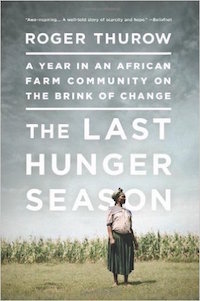 The Last Hunger Season: A Year in an African Farm Community on the Brink of Change
The Last Hunger Season: A Year in an African Farm Community on the Brink of Change
by Roger Thurow
At 4:00 am, Leonida Wanyama lit a lantern in her house made of sticks and mud. She was up long before the sun to begin her farm work, as usual. But this would be no ordinary day, this second Friday of the new year. This was the day Leonida and a group of smallholder farmers in western Kenya would begin their exodus, as she said, “from misery to Canaan,” the land of milk and honey.
Africa’s smallholder farmers, most of whom are women, know misery. They toil in a time warp, living and working essentially as their forebears did a century ago. With tired seeds, meager soil nutrition, primitive storage facilities, wretched roads, and no capital or credit, they harvest less than one-quarter the yields of Western farmers. The romantic ideal of African farmers––rural villagers in touch with nature, tending bucolic fields––is in reality a horror scene of malnourished children, backbreaking manual work, and profound hopelessness. Growing food is their driving preoccupation, and still they don’t have enough to feed their families throughout the year. The wanjala––the annual hunger season that can stretch from one month to as many as eight or nine––abides.
But in January 2011, Leonida and her neighbors came together and took the enormous risk of trying to change their lives. Award-winning author and world hunger activist Roger Thurow spent a year with four of them––Leonida Wanyama, Rasoa Wasike, Francis Mamati, and Zipporah Biketi––to intimately chronicle their efforts. In The Last Hunger Season, he illuminates the profound challenges these farmers and their families face, and follows them through the seasons to see whether, with a little bit of help from a new social enterprise organization called One Acre Fund, they might transcend lives of dire poverty and hunger.
The daily dramas of the farmers’ lives unfold against the backdrop of a looming global challenge: to feed a growing population, world food production must nearly double by 2050. If these farmers succeed, so might we all.
 Straight on Till Morning: The Life of Beryl Markham
Straight on Till Morning: The Life of Beryl Markham
by Mary S. Lovell
Born in England and raised in Kenya, Beryl Markham was a notorious beauty. She trained race horses and had scandalous affairs, but she is most remembered for being a pioneering aviatrix. She became the first woman to cross the Atlantic Ocean and the first person to make it from London to New York nonstop. In Mary S. Lovell’s definitive biography, Beryl takes on new life?vividly portrayed by a master biographer whose knowledge of her subject is unparalleled.
 Imperial Reckoning: The Untold Story of Britain’s Gulag in Kenya
Imperial Reckoning: The Untold Story of Britain’s Gulag in Kenya
by Caroline Elkins
As part of the Allied forces, thousands of Kenyans fought alongside the British in World War II. But just a few years after the defeat of Hitler, the British colonial government detained nearly the entire population of Kenya’s largest ethnic minority, the Kikuyu-some one and a half million people.
The compelling story of the system of prisons and work camps where thousands met their deaths has remained largely untold-the victim of a determined effort by the British to destroy all official records of their attempts to stop the Mau Mau uprising, the Kikuyu people’s ultimately successful bid for Kenyan independence.
Caroline Elkins, an assistant professor of history at Harvard University, spent a decade in London, Nairobi, and the Kenyan countryside interviewing hundreds of Kikuyu men and women who survived the British camps, as well as the British and African loyalists who detained them.
The result is an unforgettable account of the unraveling of the British colonial empire in Kenya-a pivotal moment in twentieth- century history with chilling parallels to America’s own imperial project.
Imperial Reckoning is the winner of the 2006 Pulitzer Prize for Nonfiction.
 The Boy Is Gone: Conversations with a Mau Mau General
The Boy Is Gone: Conversations with a Mau Mau General
by Laura Lee P. Huttenbach
A story with the power to change how people view the last years of colonialism in East Africa, The Boy Is Gone portrays the struggle for Kenyan independence in the words of a freedom fighter whose life spanned the twentieth century’s most dramatic transformations. Born into an impoverished farm family in the Meru Highlands, Japhlet Thambu grew up wearing goatskins and lived to stand before his community dressed for business in a pressed suit, crisp tie, and freshly polished shoes. For most of the last four decades, however, he dressed for work in the primary school classroom and on his lush tea farm.
The General, as he came to be called from his leadership of the Mau Mau uprising sixty years ago, narrates his life story in conversation with Laura Lee Huttenbach, a young American who met him while backpacking in Kenya in 2006. A gifted storyteller with a keen appreciation for language and a sense of responsibility as a repository of his people’s history, the General talks of his childhood in the voice of a young boy, his fight against the British in the voice of a soldier, and his long life in the voice of shrewd elder. While his life experiences are his alone, his story adds immeasurably to the long history of decolonization as it played out across Africa, Asia, and the Americas.
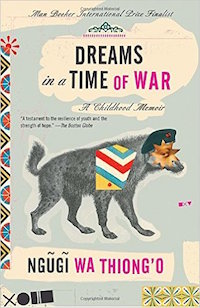 Dreams in a Time of War: A Childhood Memoir
Dreams in a Time of War: A Childhood Memoir
by Ngugi wa Thiong’o
Born in 1938 in rural Kenya, Ng?g? wa Thiong’o came of age in the shadow of World War II, amidst the terrible bloodshed in the war between the Mau Mau and the British. The son of a man whose four wives bore him more than a score of children, young Ng?g? displayed what was then considered a bizarre thirst for learning, yet it was unimaginable that he would grow up to become a world-renowned novelist, playwright, and critic.
In Dreams in a Time of War, Ng?g? deftly etches a bygone era, bearing witness to the social and political vicissitudes of life under colonialism and war. Speaking to the human right to dream even in the worst of times, this rich memoir of an African childhood abounds in delicate and powerful subtleties and complexities that are movingly told.
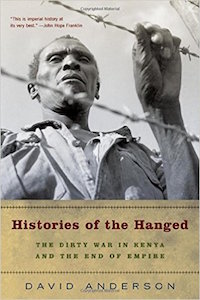 Histories of the Hanged: The Dirty War in Kenya and the End of Empire
Histories of the Hanged: The Dirty War in Kenya and the End of Empire
by David Anderson
In “a gripping narrative that is all but impossible to put down” (Joseph C. Miller), Histories of the Hanged exposes the long-hidden colonial crimes of the British in Kenya. This groundbreaking work tells how the brutal war between the colonial government and the insurrectionist Mau Mau between 1952 and 1960 dominated the final bloody decade of imperialism in East Africa.
Using extraordinary new evidence, David Anderson puts the colonial government on trial with eyewitness testimony from over 800 court cases and previously unseen archives. His research exonerates the Kikuyu rebels; hardly the terrorists they were thought to be; and reveals the British to be brutal aggressors in a “dirty war” that involved leaders at the highest ranks of the British government. This astonishing piece of scholarship portrays a teetering colonial empire in its final phase; employing whatever military and propaganda methods it could to preserve an order that could no longer hold.
 Kenya: A History Since Independence
Kenya: A History Since Independence
by Charles Hornsby
Since independence in 1963, Kenya has survived nearly five decades as a functioning nation-state, with regular elections, its borders intact and without experiencing war or military rule. However, Kenya’s independence has always been circumscribed by its failure to transcend its colonial past; its governments have failed to achieve adequate living conditions for most of its citizens; and its politics have been fraught with controversy – illustrated most recently by the post-election protests and violence in 2007.
The decisions of the early years of independence, and the acts of its leaders in the decades since – from Jomo Kenyatta, Tom Mboya and Oginga Odinga to Daniel arap Moi and Mwai Kibaki – have changed the country’s path in unpredictable ways. The political elite’s endless struggle for access to state resources has damaged Kenya’s economy and the political exploitation of ethnicity still threatens the country’s stability. In this definitive new history, Charles Hornsby demonstrates how independent Kenya’s politics have been dominated by a struggle to deliver security, impartiality, efficiency and growth, but how the legacies of the past have continued to undermine their achievement, making the long-term future of Kenya far from certain.
Kids Book Recommendations
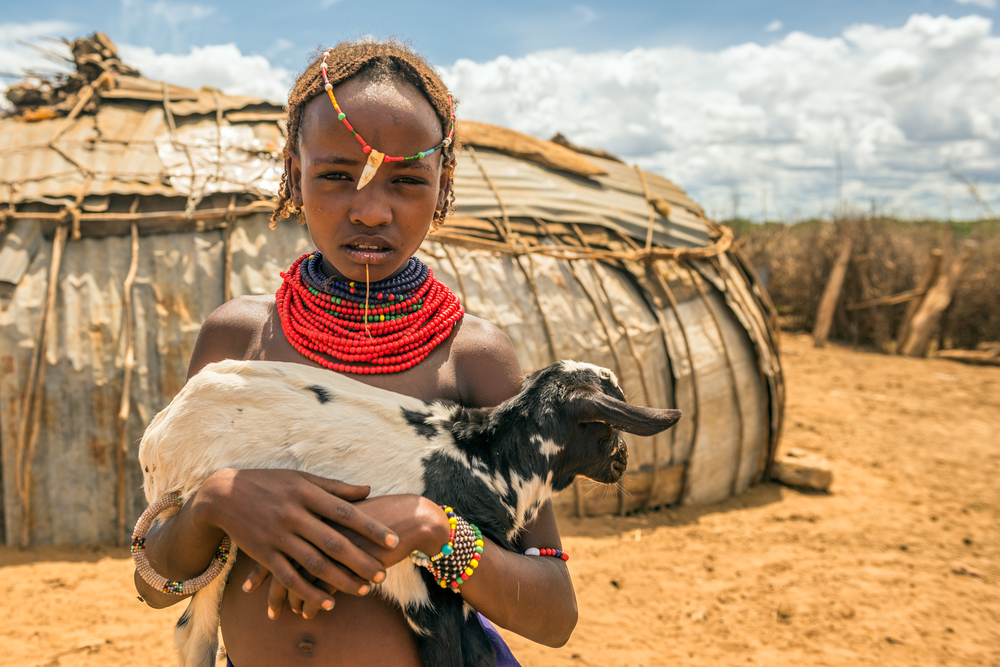
 If You Were Me and Lived in …Kenya: A Child’s Introduction to Culture around the World
If You Were Me and Lived in …Kenya: A Child’s Introduction to Culture around the World
by Carole P. Roman
Let’s travel to Kenya! Number five in this exciting series travels to Africa to learn about the thrilling country of Kenya. This extraordinary book “If You Were Me and Lived in…Kenya- A Child’s Introduction to Cultures Around the World” explores life for children on a new continent. The book touches on many familiar topics such as names, money, games,and food as well the sites and sounds that come with living in Africa. Embraced by educators, parents, and children, the series gently and respectfully introduces the subjects of cultures and customs around the world.
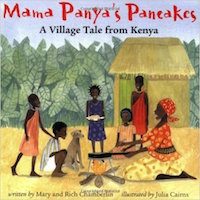 Mama Panya’s Pancakes
Mama Panya’s Pancakes
by Mary Chamberlin
On market day, Mama Panya’s son Adika invites everyone he sees to a pancake dinner. How will Mama Panya ever feed them all? This clever and heartwarming story about Kenyan village life teaches the importance of sharing, even when you have little to give.
 Mama Miti: Wangari Maathai and the Trees of Kenya
Mama Miti: Wangari Maathai and the Trees of Kenya
by Donna Jo Napoli
Through artful prose and beautiful illustrations, Donna Jo Napoli and Kadir Nelson tell the true story of Wangari Muta Maathai, known as “Mama Miti,” who in 1977 founded the Green Belt Movement, an African grassroots organization that has empowered many people to mobilize and combat deforestation, soil erosion, and environmental degradation.
Today more than 30 million trees have been planted throughout Mama Miti’s native Kenya, and in 2004 she became the first African woman to win the Nobel Peace Prize. Wangari Muta Maathai has changed Kenya tree by tree—and with each page turned, children will realize their own ability to positively impact the future.
 Wangari’s Trees of Peace: A True Story from Africa
Wangari’s Trees of Peace: A True Story from Africa
by Jeanette Winter
As a young girl growing up in Kenya, Wangari was surrounded by trees. But years later when she returns home, she is shocked to see whole forests being cut down, and she knows that soon all the trees will be destroyed. So Wangari decides to do something—and starts by planting nine seedlings in her own backyard. And as they grow, so do her plans.
This true story of Wangari Maathai, environmentalist and winner of the Nobel Peace Prize, is a shining example of how one woman’s passion, vision, and determination inspired great change.
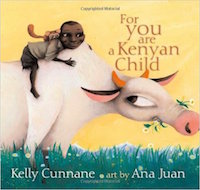 For You Are a Kenyan Child
For You Are a Kenyan Child
by Kelly Cunnane
Imagine you live in a small Kenyan village, where the sun rises over tall trees filled with doves. You wake to the sound of a rooster’s crow, instead of an alarm clock and the school bus. Your afternoon snack is a tasty bug plucked from the sky, instead of an apple. And rather than kicking a soccer ball across a field, you kick a homemade ball of rags down a dusty road. But despite this, things aren’t that different for a Kenyan child than they would be for an American kid, are they? With so much going on around you, it’s just as easy to forget what your mama asked you to do!
 Bringing the Rain to Kapiti Plain
Bringing the Rain to Kapiti Plain
by Verna Aardema
A cumulative rhyme relating how Ki-pat brought rain to the drought-stricken Kapiti Plain. Verna Aardema has brought the original story closer to the English nursery rhyme by putting in a cumulative refrain and giving the tale the rhythm of “The House That Jack Built.”
 Facing the Lion: Growing Up Maasai on the African Savanna
Facing the Lion: Growing Up Maasai on the African Savanna
by Joseph Lemasolai Lekuton
Joseph Lemasolai Lekuton gives American kids a firsthand look at growing up in Kenya as a member of a tribe of nomads whose livelihood centers on the raising and grazing of cattle. Readers share Lekuton’s first encounter with a lion, the epitome of bravery in the warrior tradition. They follow his mischievous antics as a young Maasai cattle herder, coming-of-age initiation, boarding school escapades, soccer success, and journey to America for college. Lekuton’s riveting text combines exotic details of nomadic life with the universal experience and emotions of a growing boy.
Film Recommendations
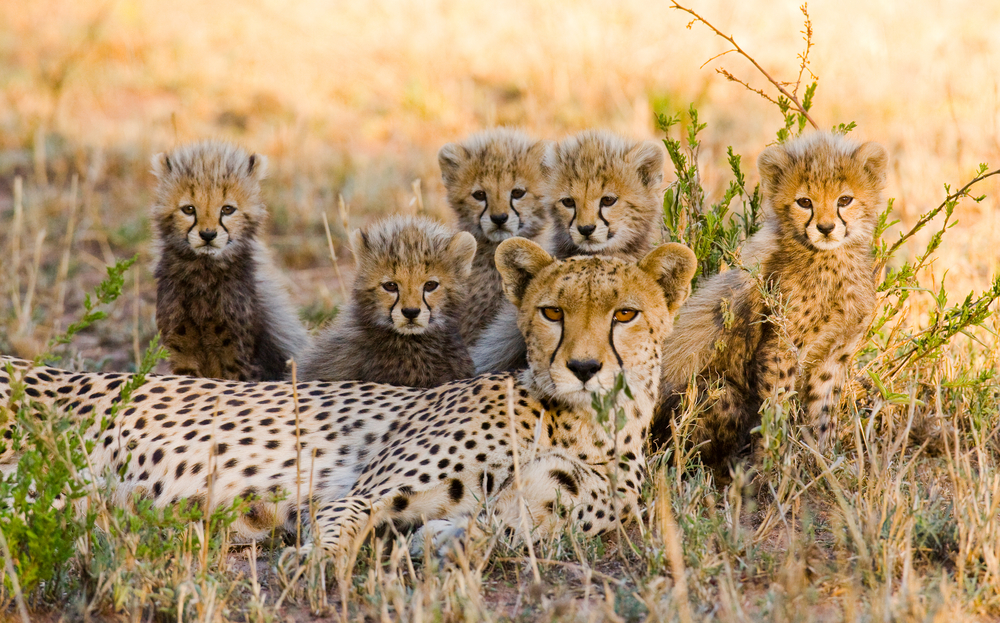
SOS: Sold Out Slaves. Kenya’s growing child prostitution crisis
According to a 2006 UNICEF report, one Kenyan child in three is involved in underage prostitution. It is a drastic situation caused by incredibly poor living conditions, with around 50% of the population below the poverty line. Sex tourism is flourishing and a major contributor to the sexual exploitation of minors, with Kenya among the top 5 world destinations for child abuse. Despite being illegal, child prostitution is very common, with kids as young as 8 or 9 being paid by adults to perform sex acts. It’s their only way to make a living.
Slum Survivors: Kenya
Worldwide, more than a billion people live in slums, with as many as one million in Kibera, Africa’s largest such settlement, in the Kenyan capital Nairobi. Slum Survivors, IRIN’s first full-length documentary, tells some of their stories.
Featured Documentary – Kenya’s Enemy Within
In an attempt to shield itself from the armed group al-Shabab, Kenya has started construction on a 700km-long wall along its porous border with Somalia.
Born To Run: The Kenyan Secrets
Former 5000m World Champion Eamonn Coghlan travels to Kenya’s highlands in Iten, to un-cover the training secrets of the best distance runners in the world.
Along with high altitude and many mental advantages in this Documentary we went deep down and analysed their lifestyles inch by inch. Living off mostly high-carb whole foods the Kenyans keep a clean diet with minimum dairy and low fat.
Many of the youngsters devote their lifes to reaching elite level in marathon running to earn a living.
Faces of Africa – Jomo Kenyatta : The Founding Father of Kenya
Many institutions bear his name. He upgraded the economic status of the country after independence. But his reign faced dark shadows when three prominent politicians were assassinated. Up to date he is accused of acquiring massive pieces of land.
He is Jomo Kenyatta, the first president of Kenya.
The Land of No Men: Inside Kenya’s Women-Only Village
Where the foothills of Mount Kenya merge into the desert, the people of Samburu have maintained a strict patriarchy for over 500 years in northern Kenya. That is, until 25 years ago, when Rebecca Lolosoli founded Umoja village as a safe haven for the region’s women. Umoja, which means “unity” in Swahili, is quite literally a no man’s land, and the matriarchal refuge is now home to the Samburu women who no longer want to suffer abuses, like genital mutilation and forced marriages, at the hands of men.
Throughout the years, it has also empowered other women in the districts surrounding Samburu to start their own men-excluding villages. Broadly visited Umoja and the villages it inspired to meet with the women who were fed up with living in a violent patriarchy.
Al Jazeera Investigates – Inside Kenya’s Death Squads
For the first time members of Kenya’s counter-terrorism police admit to “eliminating” suspected Muslim radicals.
Speaking exclusively to Al Jazeera’s Investigative Unit, officers from four units of Kenya’s counter-terrorism apparatus admitted the police assassinate suspects on government orders.
They claim that the order to assassinate is made by the National Security Council, a body chaired by President Uhuru Kenyatta.
The film examines how extra-judicial killings are seemingly becoming normalized, thirteen years after the so-called ‘War on Terror’ was declared.
Talk Africa: The SGR Project in Kenya
The Standard Gauge Railway is Kenya’s biggest infrastructure project since independence. But even more impressive, is the way it’s being done. Combining Chinese technology and Kenyan skills, the SGR is one of Africa’s biggest examples of technology transfer on the continent. Beatrice Marshall unpacks the SGR project.
BBC “Kenya: White Terror”
A deep, inspiring video documenting former Mau Mau detainees from the Kenyan Emergency in the 1950’s. This BBC documentary is based on the research of Harvard Professor, Caroline Elkins. This documentary has been part of the evidence supporting the Mau Mau case in London’s High Court.
Kenya Documentary: Untold Stories of Change
A Kenya documentary about the inspirational stories of 3 locally powered projects working in very remote parts of Kenya tackling poverty, injustice & social inequality.
“The Cut” Documentary – Female Genital Mutilation/ Cutting (FGM/C) In Kenya (2009)
Short documentary about Mary (aged 14 years) and Alice (who is in her early 20’s) from Kenya. Both are affected by the traditional rite of passage into womanhood: genital cutting. Mary and her community are preparing for her ceremonial cutting, and Alice is studying to be a social worker to work against female genital mutilation. As the first in her community to refuse the practice, Alice has paid a high price for her choice to break with tradition. Alice tells of the different myths she encounters in the community around her, as to why circumcision is practiced. Mary, on the other hand, has no voice. She just goes through the preparations and rituals in silence.
Black Man’s Land: Images of Colonialism and Independence in Kenya; White Man’s Country ep 1 of 3
The Black Man’s Land Trilogy is a series of documentary films on colonialism, nationalism and revolution in Africa, filmed in Kenya in 1970 and released in 1973, and still widely used in African studies programs internationally. The three titles are White Man’s Country, Mau Mau, and Kenyatta.
Black Man’s Land: Images of Colonialism and Independence in Kenya; Mau Mau Crisis ep 2 Of 3
Black Man’s Land: Images of Colonialism and Independence in Kenya; Kenyatta ep 3 of 3
Locked up and forgotten – via CNN
A documentary about mental illness and the lack of treatment in Kenya.
Kenya’s dairy industry switches from cows to camels | Global Ideas
The cow is the most important farm animal in parts of Africa. But climate change is threatening the existence of the animal. Recurring droughts and extreme heat are making cows unable to produce essential milk. In Kenya, a group of farmers has found an alternative in camel milk. Unlike cows, camels can withstand long periods of extreme drought and still produce milk all year round. Some 200 women have already made the switch from cow to camel milk, which is believed to be healthier. The move has improved living conditions for many, especially because they are able to sell milk from their camels at a competitive price.
Gender and Identity Week 5: Case Study: Advocacy and LGBT rights in Kenya
The Kenyan national Constitution of 2010 prohibits discrimination against any person by the state or other persons. As such Kenya wish to protect the human rights in the country, but the reality is somewhat different. The cultural and religious beliefs of the inhabitants impact their attitudes towards LGBTI persons, because they see homosexuality as a Western concept and as “un-African”. The results of these attitudes are discrimination and persecution of the LGBTI people, who are not free to walk on the street or fight for their rights as human beings
Love is the Answer | Boniface Mwangi | TEDxOccidentalCollege
Boniface Mwangi encourages us to explore how love can change the world. He tells his own story of how love from others affected him growing up and how he was able to share that love in the lives of others.
Article Recommendations

Millions of Kenyans at Risk for Elephantiasis Disease – Al Jazeera
Secrets of Wildlife on Kenya’s Masai Mara – NY Times
Dangerously Cheap, Kenya’s Illegal Abortions – Al Jazeera
The Heartbreaking Moment a Kenyan Girl is Sold into Marriage – Washington Post
The Rising Popularity of Snake Farms – BBC
Kenya Delays Closure of Wold’s Largest Refugee Camp – Al Jazeera
As Grasslands Dwindle Kenya’s Shepherds Seek Urban Pastures – NY Times
‘This is our Future’ – Kenya’s Croton Tree Touted as New Biofuels Crop – The Guardian
Kenya: Boxing For Change – Al Jazeera
How One Kenyan Tribe Produces The World’s Best Runners – NPR
The Elders Fighting FGM in Kenya: ‘It Robs Women of Their Dignity’ – In Pictures – The Guardian
Kenyan Foreign Minister on Corruption Claims – Al Jazeera
Kenya’s Women Struggle to End Male Stranglehold on Power – The Guardian
Kenya: Telling the Story of Turkana, One Film at a Time – Al Jazeera
Kenyan Creativity Broadens Employment Horizons for Disabled People – The Guardian
Here’s Why Mobile Money is Drastically Reducing Poverty in Kenya – Washington Post
Climate Change in Kenya: If We Don’t Act Now, We Turkana Could Lose Our Homes – The Guardian

Project Options:
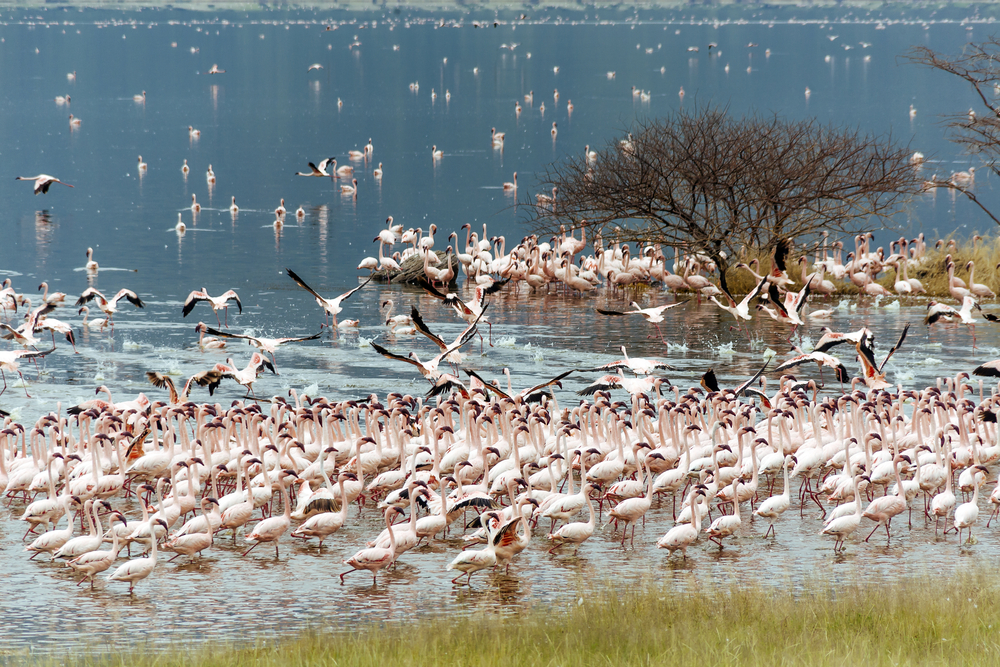
History
People have lived in what we now call Kenya since the early Paleolithic times. Having weathered European colonialism and emerged as an independent nation, Kenya is one of the key players in the African community of nations. Examine some aspect of the country’s history in greater depth, or create a timeline that paints the narrative arc of the region’s history:
- Kenyan pre-history
- Arab arrival
- European arrival
- East Africa Protectorate
- Kenya Colony
- Kenya Africa Union
- Mau Mau Uprising
- Kenyan Independence
- Modern history
Jomo Kenyatta
Who was Jomo Kenyatta and why is he so significant in modern Kenya’s establishment? Study his rise to power and his influence over the country. What did he do well? What was he criticized for? Can you think of any other historical figures that have played similar roles in other countries? Compare and contrast them with Jomo Kenyatta. What has been his lasting legacy in the country? Interview some Kenyan people and ask questions about Kenyatta and his historical presence. Older people may remember his rise.
Mau Mau Uprising
Who were the Mau Mau and what was their cause? Who were the key players in the uprising and what were the turning points in their fight against the colonial powers? What were the specific gains of the movement, economically, politically, culturally or otherwise?
Wildlife on the Masai Mara
The wildlife on the Masai Mara (and other reserves) in Kenya is a national treasure. With climate change and poachers providing constant threat to animal populations there is real work to be done in conservation and wildlife management. What is the state of the wildlife populations on the Masai Mara. How does that compare with twenty or fifty years ago?
What are the projections for animal populations moving forward? What conservation efforts are underway and which are yielding results? What are the biggest threats to animals in Kenya? Tell some success stories surrounding conservation efforts.
Economic Growth & Action
After independence, Kenya experienced two decades of rapid economic growth that slowed significantly in the 90s and into the 2000’s. What were the factors that jump-started that economic growth and the subsequent decline? What are Kenya’s major industries? How did colonialism affect the stratification of the economic growth by people group? What role does tourism play in Kenya? What factors have affected the growth or decline of the tourist industry in Kenya?
What is the government doing to stimulate further growth? What are the growth industries within Kenya?
Athletics & Kenyan Runners
Kenya is famous for producing some of the fastest runners in the world, both short course and long distance runners. Virtually all of these runners come from one minority tribe in Kenya called the Kalenjin. Study these runners and the tribe, as well as their wins (both male and female).
What is it that produces such consistently good runners in this people group? Are there biological indicators for running that other simply don’t have? What is their training regimen and how does that affect their ability to win consistently? Profile several of the best runners and tell their stories.
Wangari Muta Maathai
Wangari Muta Maathai was the first African woman to win the Nobel Peace Prize for her work in sustainable development. What did she accomplish to gain that kind of recognition? Where did her passion and inspiration for the Green Belt movement come from? What did she do to change the face of Kenya?
What path did her career take as a result. Why is this significant? What was her influence on women’s issues in Kenya as well as environmental issues?
Profiles of …..
Conduct a series of at least five interviews within a country. The point of the exercise would be to get a well rounded view of what it is like to live in the France from a variety of ages, incomes, employments and experiences. This could be conducted as video, or as text. Do an in depth analysis of the experience/information.
People you might profile:
- Farmers
- Teachers
- Restaurant owners/workers
- Clergy or Nuns
- Government officials
- Doctors or nurses
- Cafe owners
- Street vendors
- Children
- Parents
- Drivers
- Artists or musicians
- Laborers
- Cab drivers
- Long term expats
Problems & Solutions

Female Genital Mutilation
Female Genital Mutilation (FGM) remains a significant problem in Kenya, even though it is illegal. Specifically in the Masai culture, FGM is a time honored rite of passage and is still widely practiced to initiate a girl into womanhood and make her eligible for marriage.
What, exactly is FGM? How, when, and why is it performed? What are the beliefs that cause this practice to continue to be so strongly adhered to? How many women are estimated to undergo this practice in Kenya annually? What is being done to end this violence against women? Which initiatives are most effective and why?
Menstruation
While it wouldn’t seem that menstruation would be a national problem, it is a continual struggle for many Kenyan women. What are the reasons for this? What mythologies and beliefs exist around menstruation and how does that affect the daily (monthly) lives of women? How do women in Kenya deal with their menstruation? What sorts of supplies are available? What kind of education do they receive? Is it different for women in urban centers versus rural or tribal women? Are there agencies working to educate and empower women in this area of their lives? If so, what does that look like? Tell the stories of some individual women and brainstorm some ways that this simple fact of life can become less of a burden for Kenyan women.
Corruption
There is wide spread accusation of corruption in Kenya, which is a factor in the stunting of economic growth. From the very local level where kitu kidgogo is expected to grease the wheels of petty administration in anything from stamping required paperwork on up. High level corruption in the government and banking sector has made the news and Kenya’s fall in the corruption rankings internationally are incongruous with it’s place as a leading economy in east Africa.
Examine corruption while you are in Kenya, both on the micro-level, as it is likely to affect you while you travel, and through research the larger corruption issues across the country. How is the corruption holding Kenya back? What sorts of efforts are underway to increase transparency and reduce corruption at all levels of governmental and community life?
Climate Change
Climate change poses a significant risk to Kenya in a country that is already drought and flood prone. Have a look at the climate change predictions for Kenya and their National Action Plan for addressing them, which was published in 2013. Where are they making progress on their goals? Where are they not? What the the big issues both in cause as well as effect for Kenya? What effect (if any) is it having on tourism and wildlife industries in Kenya (significant sources of income for the country). What is the economic impact across industries? What is the practical impact for communities? Tell some of the stories of individuals and communities threatened by climate change.
Refugee Camps
The Dadaab refugee camp complex is said to be the largest in the world. The inhabitants are largely the result of drought and civil war in Somalia. Study the history of the camp, the plight of the refugees and the logistics of keeping a camp like this running. Who pays for it? Who lives here? What is the daily life of a refugee in the camp like?
What are the ethical and political considerations around the camps? Describe the living conditions and infrastructure of the camp. What is the legal status of refugees, what about children born in the camp? Economically, how do people survive? Do people ever leave the camp? What is the plan for settlement or repatriation of inhabitants?
Cultural Assignment Options

Food
Quick: Can you name a Kenyan food? Most people can’t. Kenyan food isn’t famous worldwide. You’re unlikely to find a Kenyan restaurant in most big cities. And yet, Kenya has a strong food history and a distinct cuisine that has evolved from the long history of human presence in Kenya. Here is a list of the most famous Kenyan dishes that you must try while you’re in the country:
- Ugali
- Pilau
- Sukuma wiki
- Kenyan coffee
- Irio
- Nyama chomo
- Mandazis
- Githeri
Take it one step further and learn to cook some of the foods you try in Kenya. Ask for family recipes and Make a record (or a video!) of all of the new foods you’re trying as you travel through Kenya.
Meaningful Connections
What is a meaningful interaction? You get to decide that. In general, it should be an interaction in which cultural exchange took place and you learned something. Often this will be with a local person; sometimes it will be with another traveler.
Sometimes these interactions look like very little on the outside but are totally life changing on the inside. Other times, they are rock your world amazing from every angle. It could be a meal shared, an afternoon’s excursion, a discussion that opens your eyes in some way, a self revelation that happened without any words exchanged at all.
Spend a day with a local individual or family. Document your experience in photos, interviews and the written word. The best way to interact with locals is to just start chatting with them at markets, on tours or on the street. You can also ask other travelers if they have met anyone who has offered some insight into life in the country. If you are a family who have children attending a local school then have a party, invite a parent to coffee, basically just open up your home to new relationships.
Take a Class
There are many options! Don’t be limited by this list:
- Cooking
- Swahili Classes
- Masai bead work
- Sigana
- Masai or Samburu dance
- Wood carving
Museum Visits
Kenya has a number of interesting museums, many of them tucked away in tiny places focused on very narrow bands of Kenyan history or culture. As you travel, keep your eyes peeled for these and spend some time exploring them.
If you’re traveling around the country and looking for museums in various regions check out these lists:
Save your ticket stubs!
Volunteer
Volunteering is a great way to get to know a local community and give back a bit to the places that you choose to travel. There are lots of ways to do this, both organized and arranged privately, as well as impromptu opportunities that will pop up.
If you’re looking for a list of volunteer opportunities in Kenya, Transitions Abroad has a page dedicated to helping you find one. Please be advised that TAP is not recommending these, only presenting them as a list of possibilities. Vet your volunteer options carefully.
Live local
Get out of the hostel, rent a place in a local village, or do a homestay. Through websites like Airbnb it’s easy to find places to live locally.
Photo essay or a blog description of why living local was different than living in a hostel. How did this experience change the economics of your stay? What did you learn about the way locals live? What challenged you? What would you do differently next time?
Work Stay
Through an organization like WWOOF, HelpX, or Workaway you can arrange for an opportunity to work in exchange for your room and board in a number of capacities, from farm labour to hospitality. Lots of students make use of these experiences to lower the cost of their travels, while at the same time learning valuable skills or “trying out” various career areas that interest them.
Request feedback in the form of a short evaluation that can be used later for a CV or reference
Public Transportation Project
Take as many types of public transportation as possible. Kenya has a network of airports, a rail system between major cities with big upgrades to the rail infrastructure underway. Buses are a popular way to get around Kenya and depending on the route and class of bus can be quite an adventure.
Challenge yourself to take every type of public transportation available while you are in Kenya. Create a photo essay or videologue of your adventures. What did you learn?
Attend a Religious Observance
Kenya is a melting pot of tribal and colonial religions. Most of Kenya’s religious history related to colonialism is protestant Christian. Before the Europeans arrived, indigenous religions provided structure for life, there are many people still curating and living by these old beliefs. Islam accounts for eleven percent of the population’s religious practice and communities are clustered along the coast. Take some time to attend various religious observances and see what you can learn. Don’t be afraid to ask questions. How does the religious climate in Kenya compares with what you grew up with?
How to Create Your Own Course Work

Ask
Learn to ask for what you want. If you meet someone interesting, ask them to teach you. Ask them for an interview. Ask to shadow them for a day or a week. You’ll be surprised at how eager people are to share what they know and teach when someone shows actual interest. Learn to ask questions. Learn to take social risks by putting yourself out there as a learner.
Plan
You have an idea or an interest. Something surprises you on your journey and all of a sudden you have a burning desire to know more. Plan your attack:
- Narrow your field of study to a particular question or topic.
- Compile resources: Look for teachers. Who knows what you need to know? Or who can you interview to learn more? Are there books or videos on the topic you’re interested in?
- Quantify it. How will you demonstrate what you have learned? A research paper, a video project, a photo essay, through art or music, a blog post, a published piece, an interview series, a mini documentary or do you have some other idea?
Produce
Produce a quality piece of academic work that reflects your experiential learning. The whole key to quantifying outside the box learning is to translate it into something that reflects the value of what you learned and how it contributed to your overall educational process.
Perhaps this will be as simple as a traditional research paper, depending on the depth and length of your study this could be as short as three pages or as long as a dissertation. Maybe you’ll produce a video for YouTube, or something grander, like a mini-documentary. Perhaps you’ll do something concrete instead, an art, or community action project and you’ll tell the story through a photo essay, or a series of blog posts. The possibilities are limited only by the resources you have at hand. Get creative. Think outside the box and truly experience your education.
Do You Have Anything to Add to This Resource Page?
We’re actively seeking to grow these resources in an open-source spirit. Please email jenn(at)bootsnall(dot)com with your edits or submissions of new information or materials.
Thank you!
